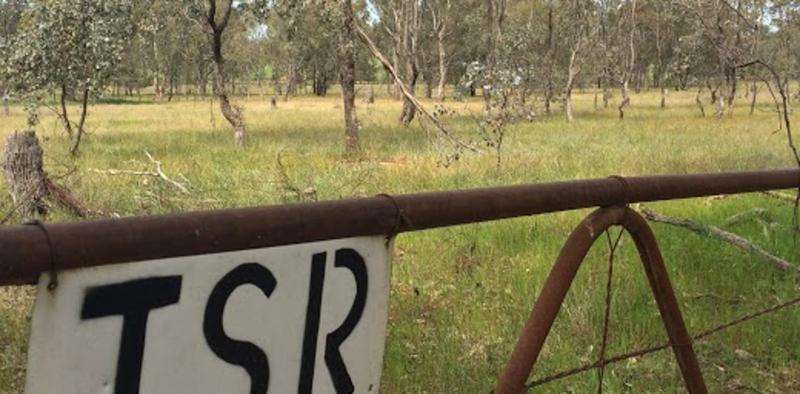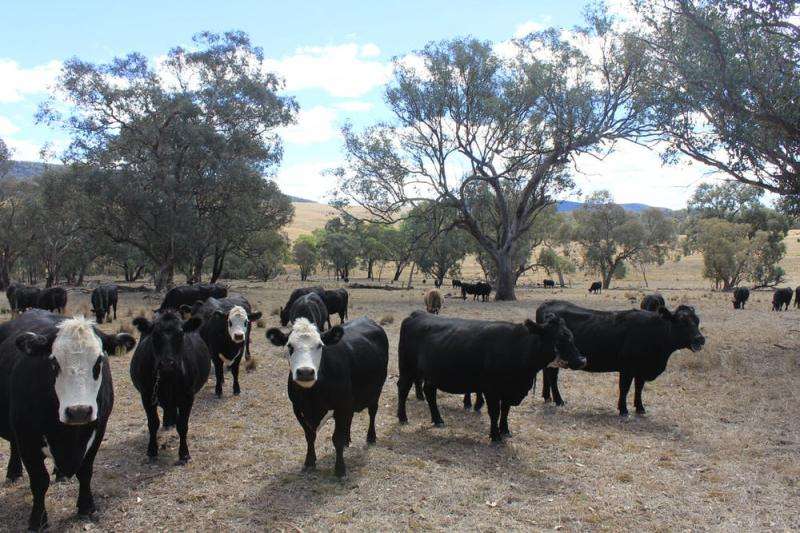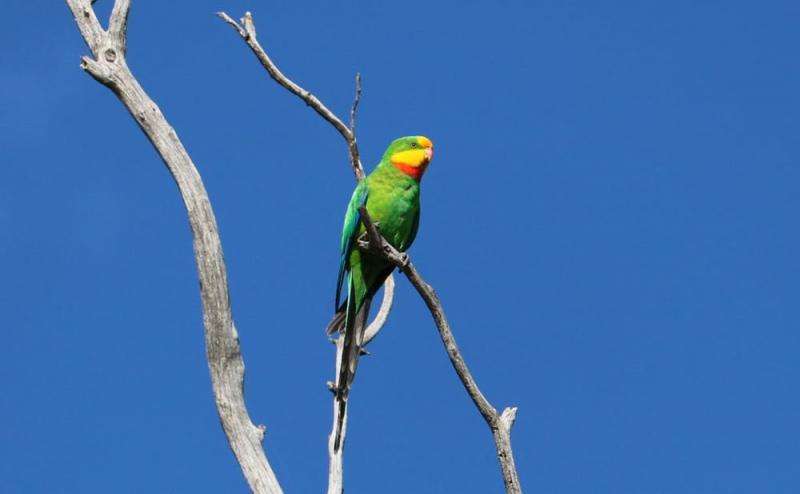Review of historic stock routes may put rare stretches of native plants and animals at risk

Since the 19th century, Australian drovers have moved their livestock along networks of stock routes. Often following traditional Indigenous pathways, these corridors and stepping-stones of remnant vegetation cross the heavily cleared wheat and sheep belt in central New South Wales.
The publicly owned Travelling Stock Reserve network of New South Wales is now under government review, which could see the ownership of much of this crown land move into private hands.
But in a study published today in the Australian Journal of Botany we suggest that privatising stock routes may endanger vital woodlands and put vulnerable species at risk.
The review will establish how individual reserves are currently being used. Although originally established for graziers, the patches of bush in the network are now more likely to be used for recreation, cultural tourism, biodiversity conservation, apiary and drought-relief grazing.
This shift away from simply moving livestock has put pressure on the government to seek "value" in the network. The review will consider proposals from individuals and organisations to buy or acquire long-term leases for particular reserves.
It is likely that most proposals to purchase travelling stock reserves would come from existing agricultural operations.
A precious national resource
Travelling stock reserves across New South Wales represent some of the most intact examples of now-endangered temperate grassy woodland ecosystems.

Our research found that changing the status or use of these reserves could seriously impact these endangered woodlands. They criss-cross highly developed agricultural landscapes, which contain very limited amounts of remnant vegetation (areas where the bush is relatively untouched). Travelling stock reserves are therefore crucially important patches of habitat and resources for native plants and animals.
This isn't the first time a change in ownership of travelling stock reserves has been flagged. Over the last century, as modern transport meant the reserves were used less and less for traditional droving, pressure to release these areas for conventional agriculture has increased.
To understand what a change in land tenure might mean to the conservation values of these woodlands, we spent five years monitoring vegetation in stock reserves in comparison to remnant woodlands on private farmland.
We found that travelling stock reserves contained a higher number of native plant species, more native shrubs, and less exotic plants than woodland remnants on private land.
The higher vegetation quality in travelling stock reserves was maintained over the five years, which included both the peak of Australia's record-breaking Millennium Drought and the heavy rainfall that followed, referred to as the "Big Wet".
The take-home message was that remnant woodland on public land was typically in better nick than in private hands.
Importantly, other studies have found that this high-quality vegetation is critical for many threatened and vulnerable native animals. For example, eastern yellow robins and black-chinned honeyeaters occur more frequently in places with more shrubs growing below the canopy.
The contrast we saw between woodlands in travelling stock reserves and private land reflects the different ways they're typically managed. Travelling stock reserves have a history of periodic low-intensity grazing, mostly by cattle, with long rest periods. Woodland on active farms tend to be more intensively grazed, by sheep and cattle, often without any strategic rest periods.

The stock reserves' future
The uncertain future of travelling stock reserves casts doubt on the state of biodiversity across New South Wales.
The current review of travelling stock reserves is considering each reserve in isolation. It flies in the face of the belief of many managers, practitioners and researchers that the true value of these reserves is in the integrity of the entire network – that the whole is greater than the sum of its parts.
Travelling stock reserves protect threatened species, allow the movement of wildlife, are seed sources for habitat restoration efforts, and support the ecosystem of adjacent agricultural land. These benefits depend on the quality of the remnant vegetation, which is determined by the grazing regime imposed by who owns and manages the land.
Of course, not all travelling stock reserves are in good condition. Some are subject to high-intensity livestock grazing (for example, under longer-term grazing leases) coupled with a lack of funding to manage and enhance natural values.
Changing the land tenure status of travelling stock reserves risks increasing grazing pressure, which our study suggests would reduce ecosystem quality and decrease their conservation value.
The travelling stock routes are important parts of our ecosystem, our national heritage, and our landscape. They can best be preserved by remaining as public land, so the entire network can be managed sustainably.
This requires adequate funding for the Local Land Services, so they can appropriately manage pest animals, weeds, erosion and illegal firewood harvesting and rubbish dumping.
Travelling stock reserves are more than just The Long Paddock – they are important public land, whose ecological value has been maintained under public control. They should continue to be managed for the public good.
Provided by The Conversation
This article was originally published on The Conversation. Read the original article.![]()


















